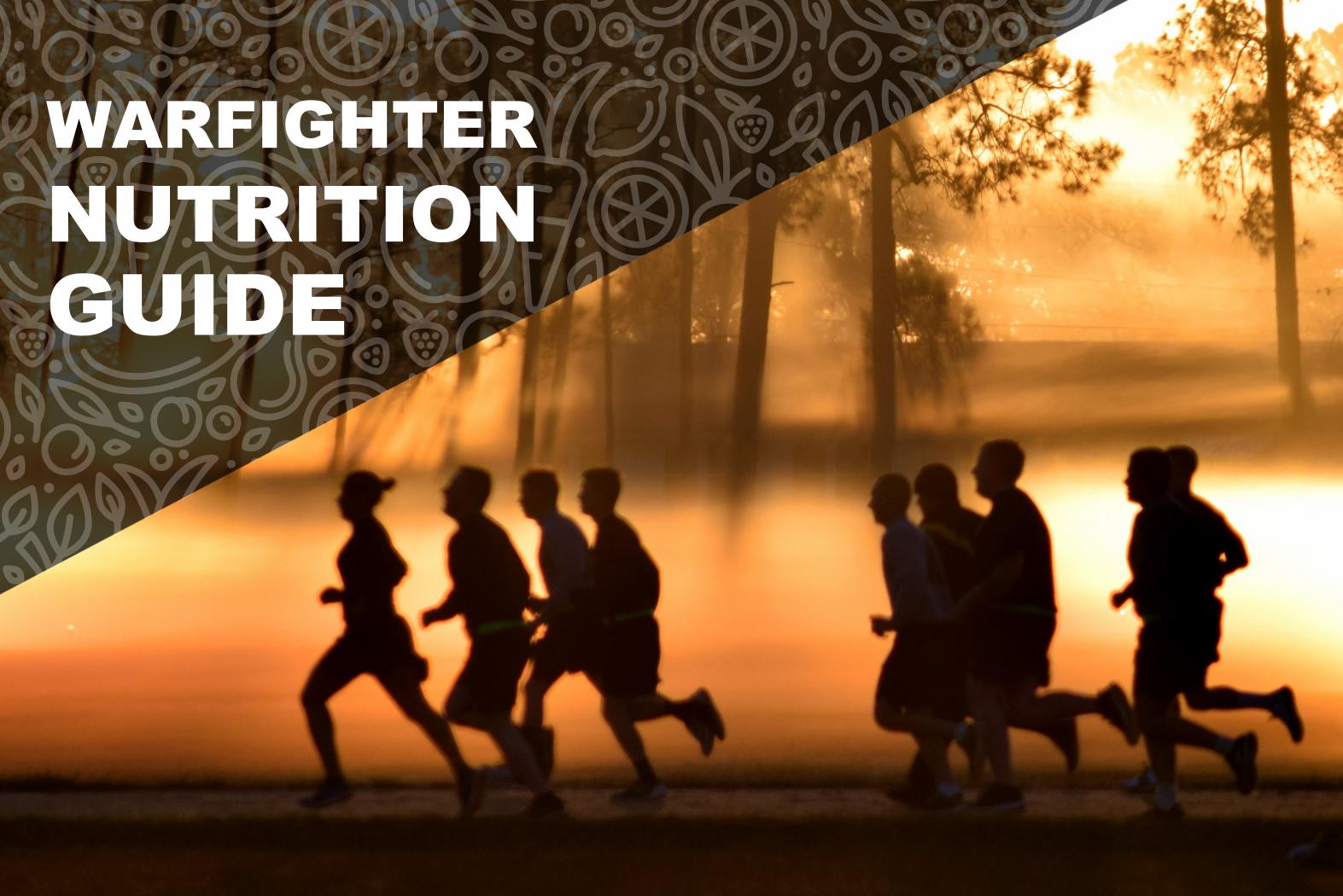- United States Department of Agriculture Agricultural Research Service. (2016). USDA Food Composition Databases. Retrieved 26 April 2017 from National Agricultural Library
Key Points
- Choose restaurants that offer lean proteins, vegetables, and meals cooked to order.
- Add more vegetables to your meal to boost your intake of vitamins, minerals, and fiber.
- Eat smaller portions of heavy, creamy, cheesy, or fried dishes and desserts.
- Make sensible food choices at fast-food restaurants.
Active schedules, training requirements, and deployments boost the appeal of dining out, especially because it can be simpler than cooking at home. When eating out at fast-food places, restaurants, social events, or when traveling, it’s important to choose foods and drinks that improve your performance and maximize mental agility, stamina, and health. This chapter provides information on how to maintain a high-performance eating plan when eating away from home.
Dining out
As discussed in Chapter 7, with meals prepared at home you can control the ingredients and how they’re prepared. Still, restaurant and fast-food meals don’t have to be poor performance fuel. If you know what to look for, you can maintain a high-performance eating plan while enjoying the experience of dining out. Try these tips on how to choose a restaurant:
- Select a restaurant where food is cooked to order rather than one where items are prepared in advance.
- Avoid places with all-you-can-eat or buffet-only specials.
- Skip the hot dogs, burgers, and pizza. Instead, search for restaurants and fast-food places that offer nutritious options such as fruit, yogurt, sushi, salads, sandwiches, or wraps.
- Plan ahead: Look for a place that offers menus with nutrition information or check the restaurant’s website for nutrition details before you head out.
- Avoid eating out when you’re very hungry. Eat a healthy snack to tide you over, if necessary.
Choose high-performance meals
Read restaurant menus carefully and try to order nutrient-dense meals. The following strategies can help you select meals that fit into your nutrition plan.
Appetizers
Appetizers are tasty, but they can lead to mindless nibbling and overeating, leaving little room for a nutritious meal. Ask your server to remove chips, peanuts, or your basket of bread after you’ve sampled a small portion. Try to limit appetizers that are fried or covered with cheese. Or choose healthier options. For example, many broth-based soups, such as vegetable soup, will help fill you up and satisfy your hunger. Cream-based soups tend to be high in saturated fat and calories.
Enjoy fresh vegetable salads as appetizers too. If you’re at the salad bar, remember your salad should be mostly vegetables: Fill your plate with dark leafy greens such as romaine lettuce, kale, or spinach, plus colorful vegetables. Add tomatoes, shredded carrots, green peas, yellow and red bell peppers, broccoli, cauliflower, crispy cucumber, and other vegetables to turn your greens into a fiesta of colors. Don’t forget the healthy fats—sliced avocado and a sprinkle of nuts, seeds, or olives—that add richness to salads and help you feel fuller longer. Top it off with an oil-based salad dressing (such as olive-oil vinaigrette) or spread (hummus). Avoid high-calorie, nutrient-poor additions such as bacon bits, croutons, and fried tortilla strips.
Main meal
To maximize nutrients, ensure your main course is full of vegetables, lean protein, and whole grains. Just like you do at home, try to “balance” your plate and choose high-performance fuel when dining out (Table 8–1).
Table 8–1. Restaurant “Fueling” Options
| High-performance Fuel | Low- or Moderate-performance Fuel |
|---|---|
| Fresh fruit or fruit cup (in 100% fruit juice) | Fruit in syrup |
| Wraps and burritos with veggies and lean protein | Hoagie or sub roll with extra deli meat, cheese, and creamy sauces or dressings |
| Extra vegetables or any vegetable combination | French fries or fried vegetables |
| Vegetable pizza (with 4 or more veggie toppings) | “Meat lovers” pizza |
| Baked potato or sweet potato | French fries or potato salad |
| Salad bar | Pasta salads with mayonnaise |
| Fresh fruit with a dollop of whipped cream | Tarts, cheesecake, Danishes, and other pastries |
Try the following tips to create a more balanced plate when eating away from home.
Meat and fish
- A reasonable portion of steak, chicken, or fish is 3–6 oz. If you have higher-calorie needs (perhaps because you’re more active), you’ll want to eat a portion that’s on the higher end. Portion sizes should be about the size of a deck of cards or the palm of your hand, not the size of your plate.
- Pass on gravies or heavy sauces, which add significant amounts of calories, sodium, and less-healthy fats. Season your meat or fish with pepper, chunky salsa, or herbs.
- Opt for skinless chicken that’s not fried.
- Choose pork cuts such as tenderloin and chops, which tend to be leaner than other cuts. Limit fatty choices such as sausage, bacon, and ribs.
- Select healthy food preparations. Ask if your meat or fish can be steamed, poached, broiled, baked, grilled, or roasted rather than fried.
- Add a protein powerhouse such as grilled chicken, salmon, or tuna to a salad for a satisfying meal.
Starches and other carbohydrates
- Order a baked potato or plain rice (brown or wild, if available), not fried rice. Avoid au gratin. Top your baked potato with small portions of sour cream, butter, cheese, or bacon. Or skip those toppings altogether and add salsa or chives for a healthier alternative with a lot of flavor.
- Choose dishes made with whole grains—such as brown rice, quinoa, whole-grain couscous, and barley—and whole-wheat bread.
- Beans and lentils are great sources of carbohydrates, fiber, and lean protein.
Vegetables
- Protein is often the “star” of your restaurant meal, so order an extra side (or two) of fresh, steamed veggies or a side salad to balance out your plate. Most restaurants will substitute an extra side of vegetables for potato options.
- Make a meal out of vegetable soup and a side salad. Be sure your meal includes a serving of protein to keep you full and satisfied.
- Instead of battered, deep-fried, or cheesy vegetables, choose steamed, grilled, sautéed, or roasted ones.
Pastas
- When ordering pasta dishes, choose tomato-based sauces (marinara) over cream-based sauces. Tomato sauce can count as a vegetable, so it’s a win-win situation.
- Look for whole-wheat pasta, which provides an extra boost from fiber, vitamins, and minerals.
- If you add meat to your pasta entrée, select grilled chicken or salmon instead of sausage or meatballs.
Sandwiches
- Order sandwiches with whole-wheat or whole-grain pita or breads.
- Choose lean deli meats and cheeses, and top with condiments such as mustard, relish, or ketchup. Spreads such as hummus and avocado are nutrient-rich alternatives to mayonnaise or “special sauce.”
- Add as many vegetables as available, including roasted sweet peppers, lettuce, tomato, cucumber, sprouts, shredded carrots, chopped olives, and jalapeños to add flavor and texture.
Beverages
- Drink water (plain or sparkling), small (4 oz) portions of 100% fruit juice, skim or low-fat milk (or soy milk), or unsweetened tea or coffee with your meal. Alcohol and sugar-sweetened beverages such as sodas, sweet tea, and lemonade add unnecessary “empty” calories.
- If you want wine or beer, drink one glass with your main dish. Take time to enjoy the taste by sipping it slowly rather than mindlessly consuming it.
Desserts
- Desserts are often high in unhealthy fats and sugar and low in performance-enhancing nutrients. If you can’t resist dessert, order sorbet, fresh or poached fruit, or frozen yogurt. Fresh berries with a dollop of whipped cream or angel-food cake with strawberries are refreshing desserts too.
- If you want an “over-the-top,” big, rich dessert, split it with your dining partners to enjoy a smaller portion.
Mindful Eating
- Be mindful, eat slowly, and take time to taste and savor your food.
- It takes about 20 minutes for your brain to receive the signal that you’re full, so eat just until you feel satisfied, not full or uncomfortable.
- Remember not to deprive yourself of foods you love. All foods can fit into a well-balanced eating plan. How much and how often you eat various foods is the key.
Other helpful tips
- Ask how a dish is prepared and request healthy substitutions (for example, baked instead of fried and olive oil instead of butter).
- If portions at the restaurant are large, split one meal with your dinner partner. Or ask for a “doggie bag” up front and set aside half of your meal before you start eating. This will help ensure that you don’t overeat, and you’ll have another meal from your leftovers.
- Try to avoid dishes described as au gratin, buttered, buttery, creamed, crispy, escalloped, fried, hash, hollandaise, in cheese sauce, in cream sauce, in gravy, rich, stewed, or with bacon or sausage.
Fast food
Fast food is typically high in calories, saturated fat, and sodium, so it’s best to eat it occasionally and choose carefully when you do (Table 8–2). However, if you plan ahead, it can fit into your healthy eating plan.
Table 8–2. Fast Food Swaps
| Skip This | Calories1 (approx.) | Try This | Calories1 (approx.) | Calories Saved |
|---|---|---|---|---|
| Double cheeseburger | 460 | Cheeseburger | 280 | 180 |
| Large fries | 480 | Small fries | 220 | 260 |
| Burrito with beans, cheese, and beef | 435 | Soft chicken taco | 185 | 250 |
| Breakfast croissant sandwich with egg, cheese, and sausage | 530 | Breakfast English muffin with egg, cheese, and Canadian bacon | 290 | 240 |
| Pepperoni pizza (regular crust), 1 slice | 315 | Cheese pizza (thin crust), 1 slice | 230 | 85 |
| Large cola (32 oz) | 415 | Plain or seltzer water with lemon wedge | 0 | 415 |
| Crispy chicken tortilla wrap | 365 | Grilled chicken tortilla wrap | 275 | 90 |

